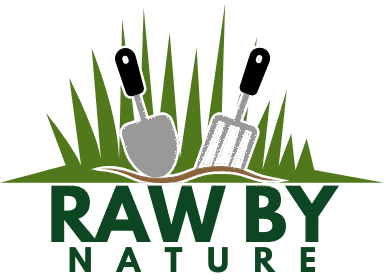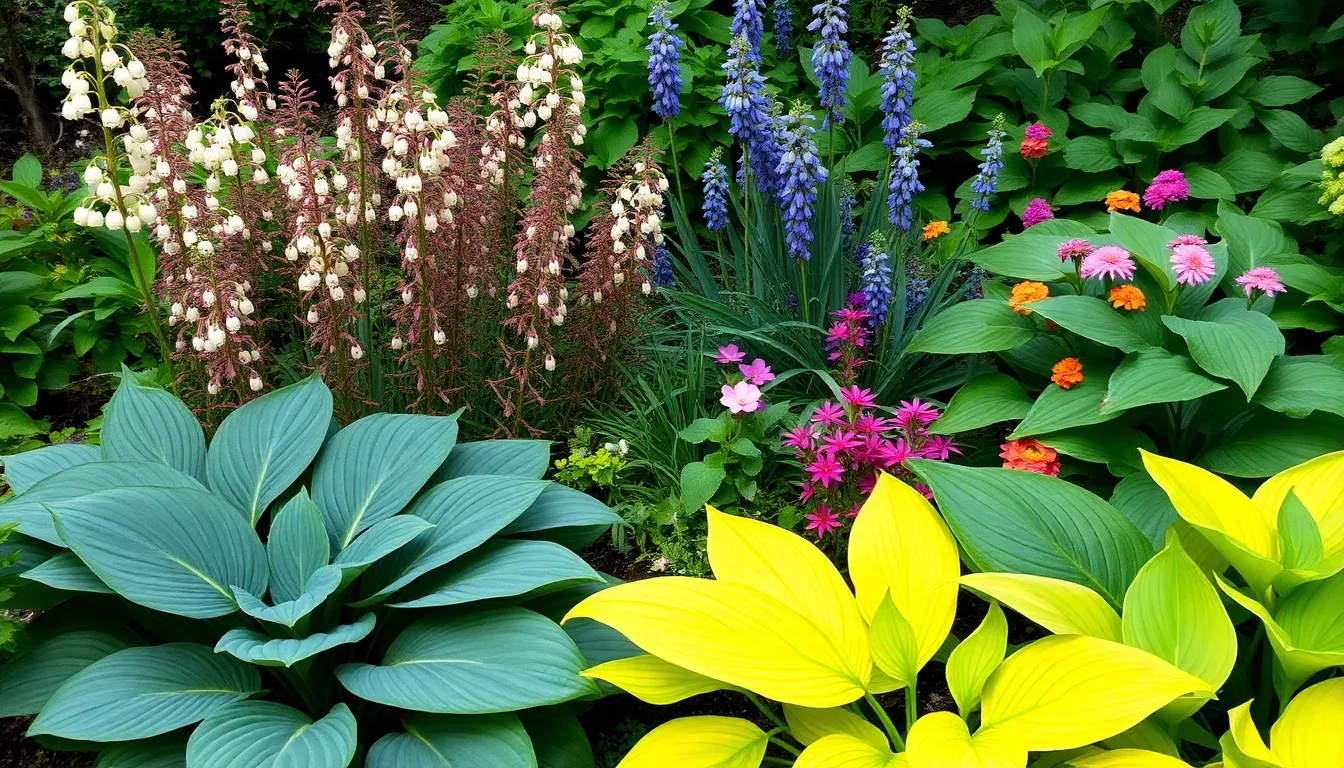Discovering the perfect plants for those elusive shaded corners of your garden can feel like uncovering a hidden treasure chest. These often-overlooked spaces have the potential to burst into life with the right selection of perennials, offering a lush and vibrant contrast to sun-drenched areas. Whether you’re just getting your hands dirty for the first time or are a seasoned gardener seeking to expand your repertoire, understanding which plants thrive in the shade is a rewarding adventure that brings beauty to every nook and cranny of your outdoor space.
Shaded areas present a unique opportunity to cultivate a diverse range of perennials that not only survive but thrive without direct sunlight. In this article, you’ll learn about an array of shade-loving plants that will add texture, color, and interest to your garden, making even the dimmest corners feel like a vibrant oasis. We’ll explore the characteristics of these resilient perennials, providing you with insights and practical tips to ensure your shaded garden flourishes throughout the seasons.
From the delicate blooms of hellebores to the bold foliage of hostas, you’ll discover a variety of perennials that can transform your shaded areas into captivating landscapes. We aim to demystify the process of selecting and caring for shade-loving plants, empowering you to make informed choices that suit your garden’s unique conditions. By embracing the potential of these underappreciated spaces, you’ll not only enhance the beauty of your garden but also create a sanctuary of tranquility and charm.
Understanding Shade-Tolerant Perennials
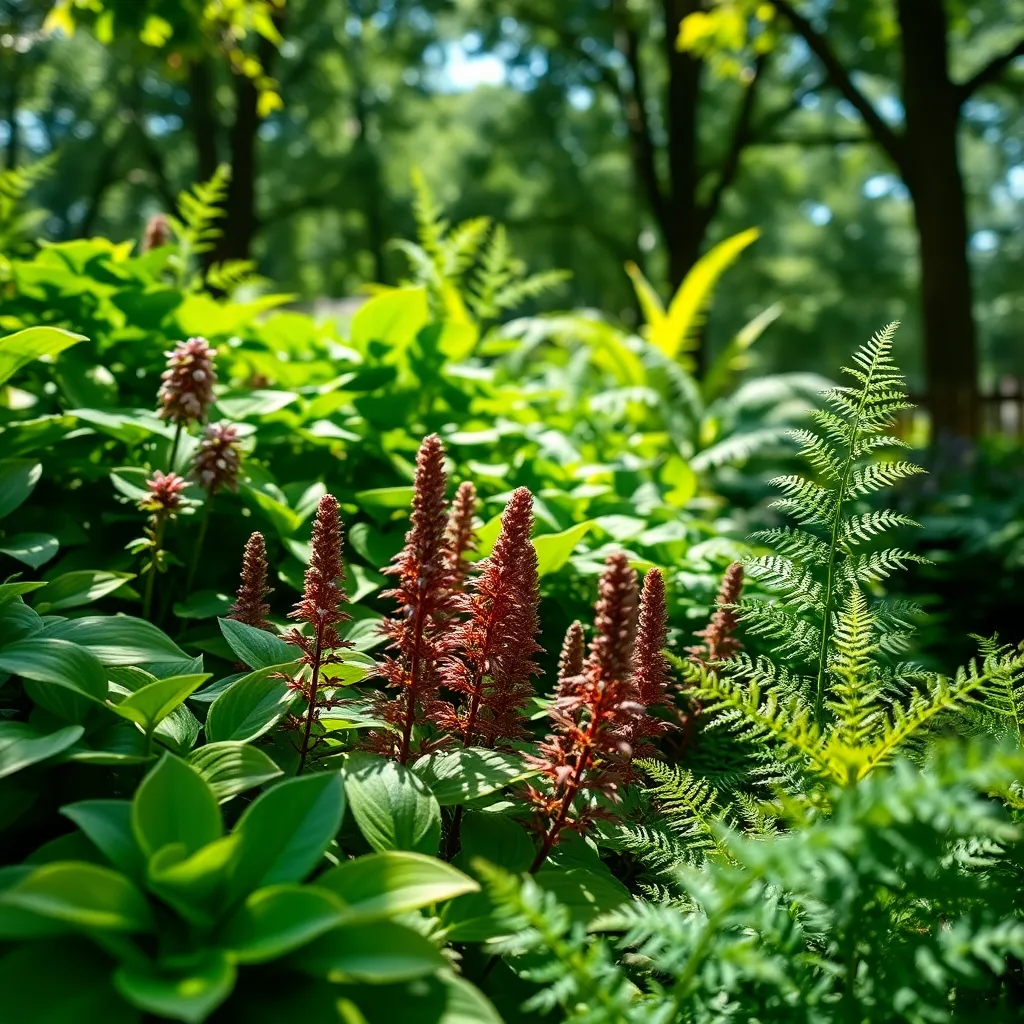
Shade-tolerant perennials are a fantastic addition to any garden, offering beauty and diversity where sunlight is limited. Understanding the needs of these plants ensures that they thrive even in less illuminated areas.
First, consider the soil requirements for shade-loving perennials. Most prefer rich, well-draining soil, so adding organic matter like compost can significantly improve growth conditions.
Watering is another crucial aspect of caring for shade-tolerant perennials. These plants often require less frequent watering than their sun-loving counterparts, but it is vital to keep the soil consistently moist without being waterlogged.
For those seeking a low-maintenance option, hostas are an excellent choice. They not only tolerate shade well but also require minimal attention once established, making them perfect for beginners.
Advanced gardeners might experiment with layering their shade gardens, planting taller species like ferns to create a canopy effect. This technique can enhance the microclimate, promoting healthier growth for smaller perennials beneath.
Consider incorporating mulch around the base of these perennials to conserve moisture and suppress weeds. Organic mulches like shredded bark or leaf mold are ideal, slowly enriching the soil as they decompose.
Top Perennials for Shaded Gardens

Creating a lush, shaded garden is not only possible but rewarding with the right choice of perennials. Hostas are a classic option, thriving in rich, well-drained soil and requiring consistent moisture to maintain their vibrant foliage.
Another excellent choice for shaded areas is the Astilbe, which offers feathery plumes of flowers that add texture and color. To keep Astilbes healthy, ensure they have access to ample water, as their shallow roots can dry out quickly in dry conditions.
For those looking to add a splash of color, consider planting Heuchera, commonly known as coral bells. These perennials prefer slightly acidic soil and benefit from a layer of mulch to retain moisture and keep their roots cool during warmer months.
Incorporating Ferns into your shaded garden can create a lush, woodland feel. These plants generally require well-draining soil and thrive with regular watering, making them ideal for gardens with consistent moisture levels.
Planting Tips for Low-Light Areas
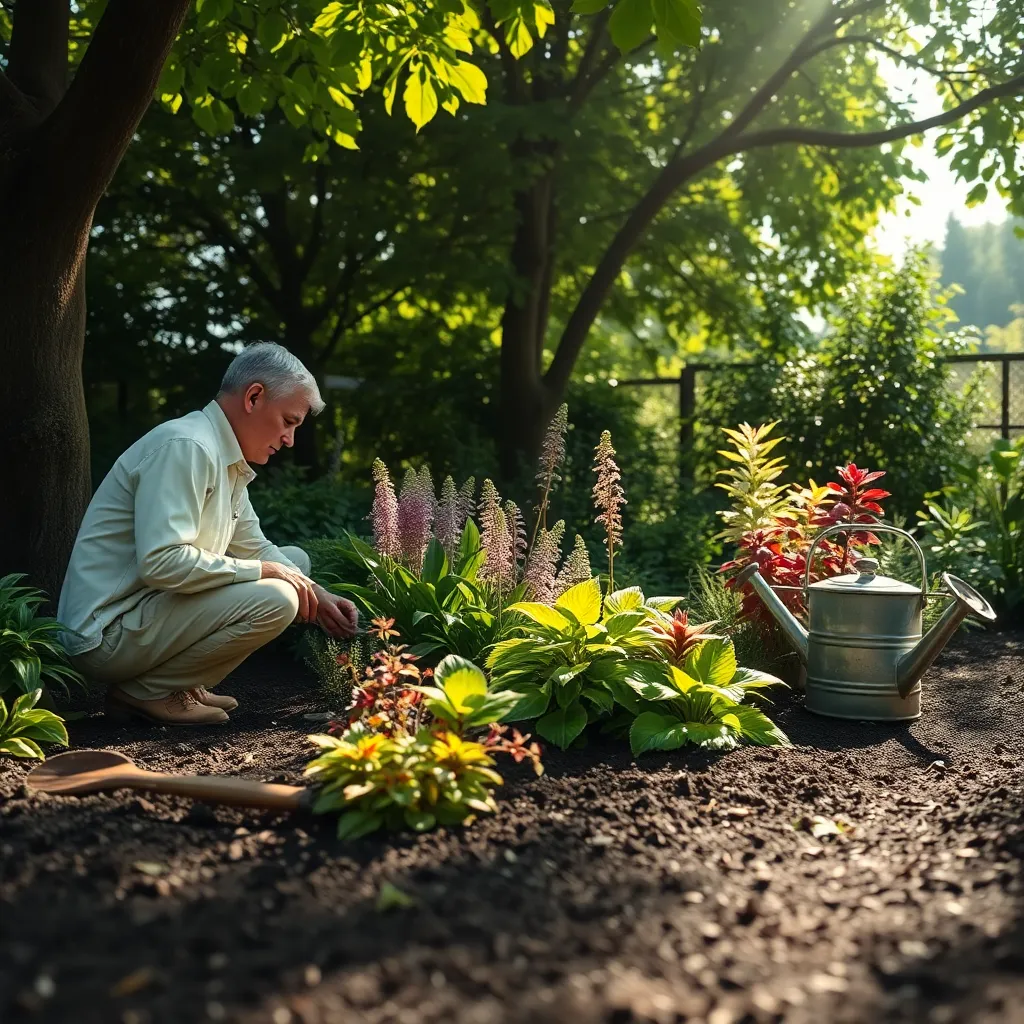
When planning your garden, consider using perennials that naturally thrive in low-light conditions, as this ensures a lush, vibrant garden even in shaded areas. Plants like hostas, ferns, and astilbes are excellent choices because they are well adapted to growing in the filtered light beneath trees or alongside buildings.
Start by preparing the soil, as healthy soil is crucial for plant growth, especially in low-light environments where plants may struggle to access other resources. Amend the soil with organic matter such as compost or leaf mold to improve drainage and nutrient content, which helps support robust root systems.
Watering is another critical factor to consider, as shaded areas can retain moisture longer than sunny spots. Ensure your plants receive consistent moisture by watering deeply once a week, allowing the soil to dry out slightly between waterings to prevent root rot.
For those looking to enhance their planting technique, consider grouping plants with similar watering and light needs together to simplify care routines. Advanced gardeners might experiment with companion planting to maximize space and create a more resilient garden ecosystem.
Finally, don’t forget to incorporate mulch, as this not only helps retain soil moisture but also suppresses weeds, which can compete with your perennials for nutrients. Apply a layer of organic mulch about two to three inches thick around your plants, taking care not to pile it against the stems, which can cause rot.
Maintenance Strategies for Shaded Perennials
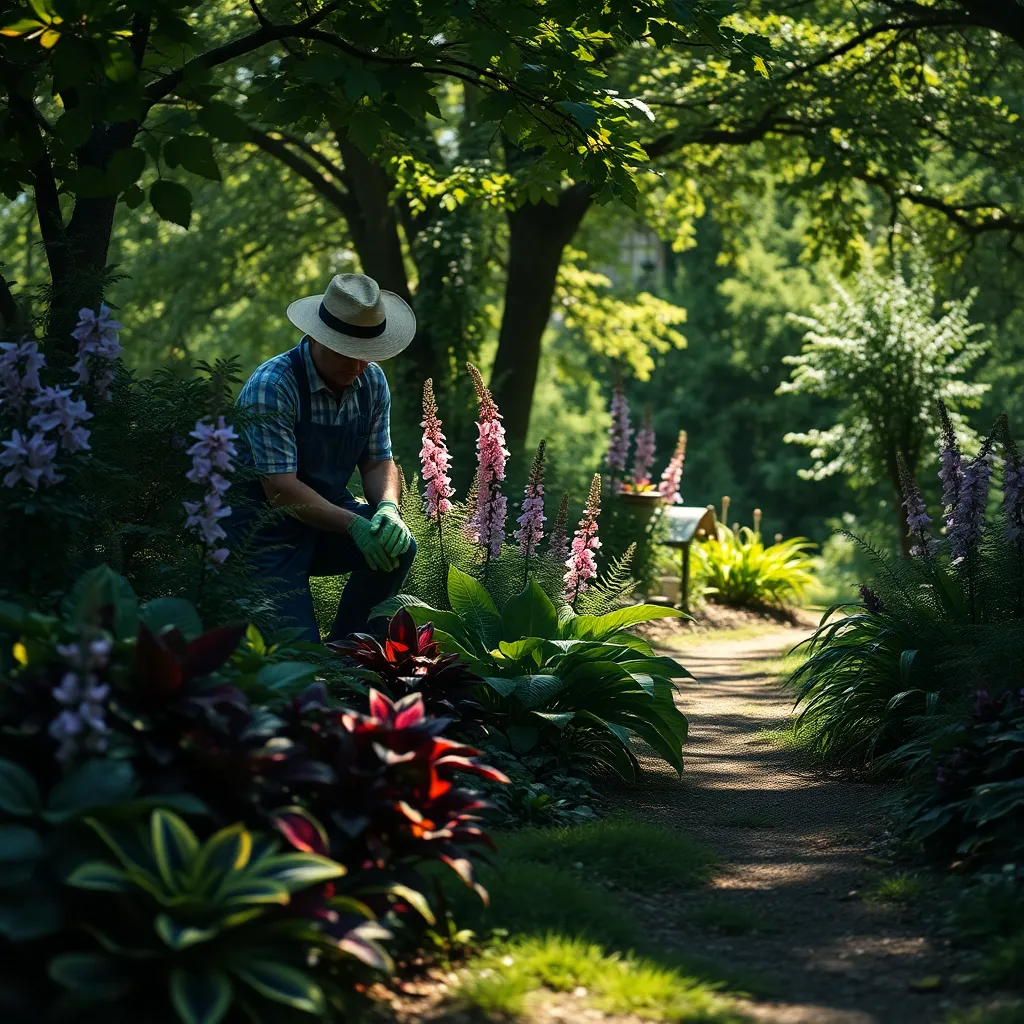
When maintaining shaded perennials, it’s crucial to understand their unique watering needs. Most shaded perennials require less frequent watering than those in sunnier spots, but be sure to check the soil moisture regularly to prevent overwatering.
Incorporating organic mulch can significantly benefit shaded perennials. A layer of mulch helps to retain moisture and maintain a stable soil temperature, creating a more hospitable environment for these plants.
Pruning should be done with care to ensure optimal growth and health. Regularly remove dead or damaged foliage to encourage new growth and improve air circulation around your plants.
Soil quality is another vital factor for thriving shaded perennials. Enriching the soil with compost or well-rotted manure can enhance nutrient content and improve drainage, particularly in heavy clay or compacted soils.
Additionally, consider the specific light requirements of your chosen perennials. While they thrive in shade, some might prefer dappled light or partial shade, so observe the natural light patterns in your garden to position your plants accordingly.
Common Challenges in Shade Gardening
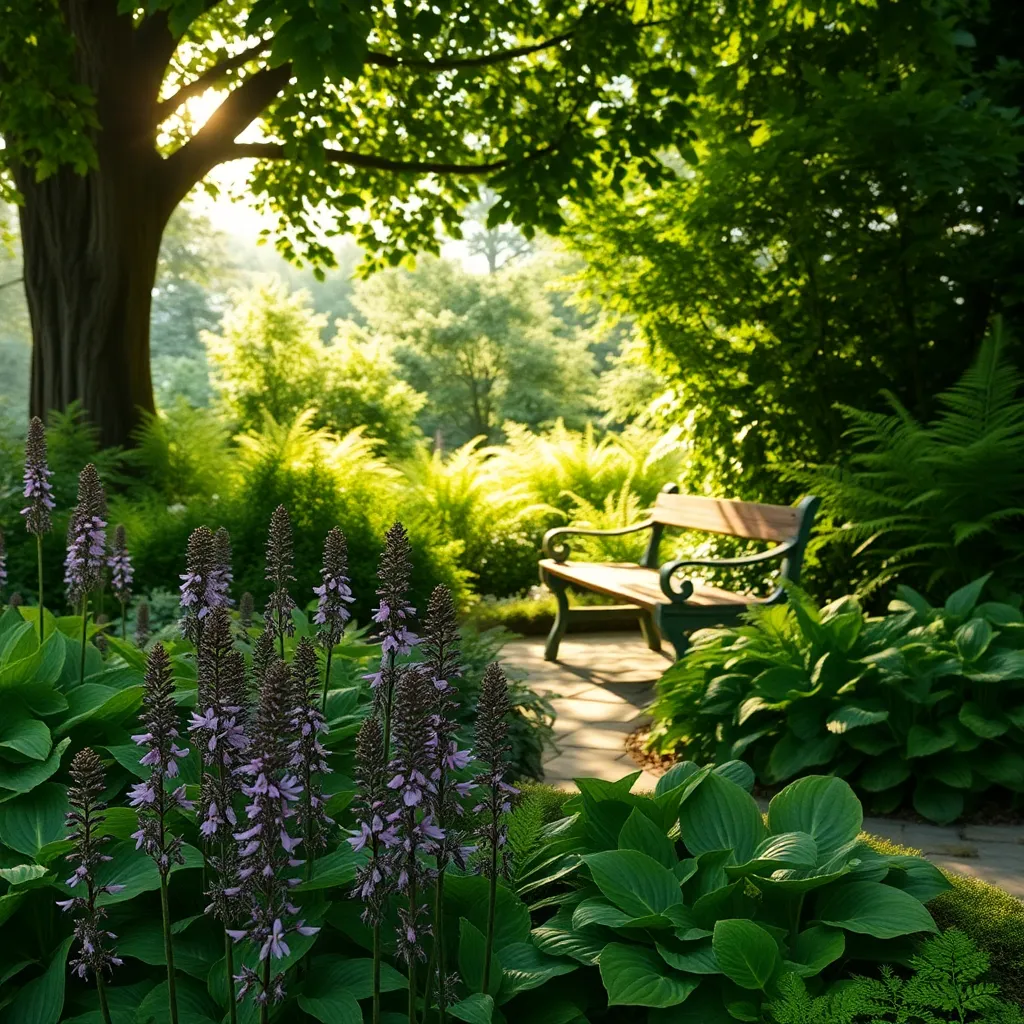
One common challenge in shade gardening is dealing with limited sunlight, which can affect plant growth. To maximize light exposure, place reflective surfaces like light-colored stones or mirrors near your plants to increase the available light.
Another issue is the competition for nutrients and water, especially when planting under trees. It’s important to use a well-balanced, slow-release fertilizer to ensure your perennials receive adequate nutrition without overwhelming them.
Shade gardening often means dealing with cooler soil temperatures, which can slow down plant growth. Mulching with organic materials like bark chips not only warms the soil but also helps retain moisture, creating a more suitable environment for your plants.
Moisture management can be tricky, as shade gardens tend to retain moisture longer. Ensure good drainage by amending soil with sand or perlite, and avoid overwatering by checking soil moisture before watering.
Conclusion: Growing Success with These Plants
In exploring the lush world of perennials that flourish in shaded areas, we’ve uncovered five key relationship insights: understanding individual needs, nurturing growth amidst challenges, fostering resilience, valuing quiet strength, and embracing the beauty of diversity. These principles not only apply to our gardens but mirror the essentials of thriving relationships. Just as perennials adapt and bloom in the shade, so too can our relationships flourish when we cultivate them with patience and care.
As an immediate step, take a moment to assess your relationship’s current landscape. Identify areas that might benefit from more attention and commit to nurturing them, whether through a heartfelt conversation, a shared experience, or simply more time spent together.
Remember, relationships, like gardens, require ongoing attention and love to truly thrive. Bookmark this article now to keep these valuable insights at your fingertips, ensuring you can revisit them whenever your relationship needs a gentle reminder or a fresh perspective.
Looking ahead, embracing these strategies will not only enhance your current relationships but also lay a strong foundation for future success, fostering connections that are as enduring and beautiful as the most resilient perennials. Your journey toward deeper, more fulfilling relationships starts today.
